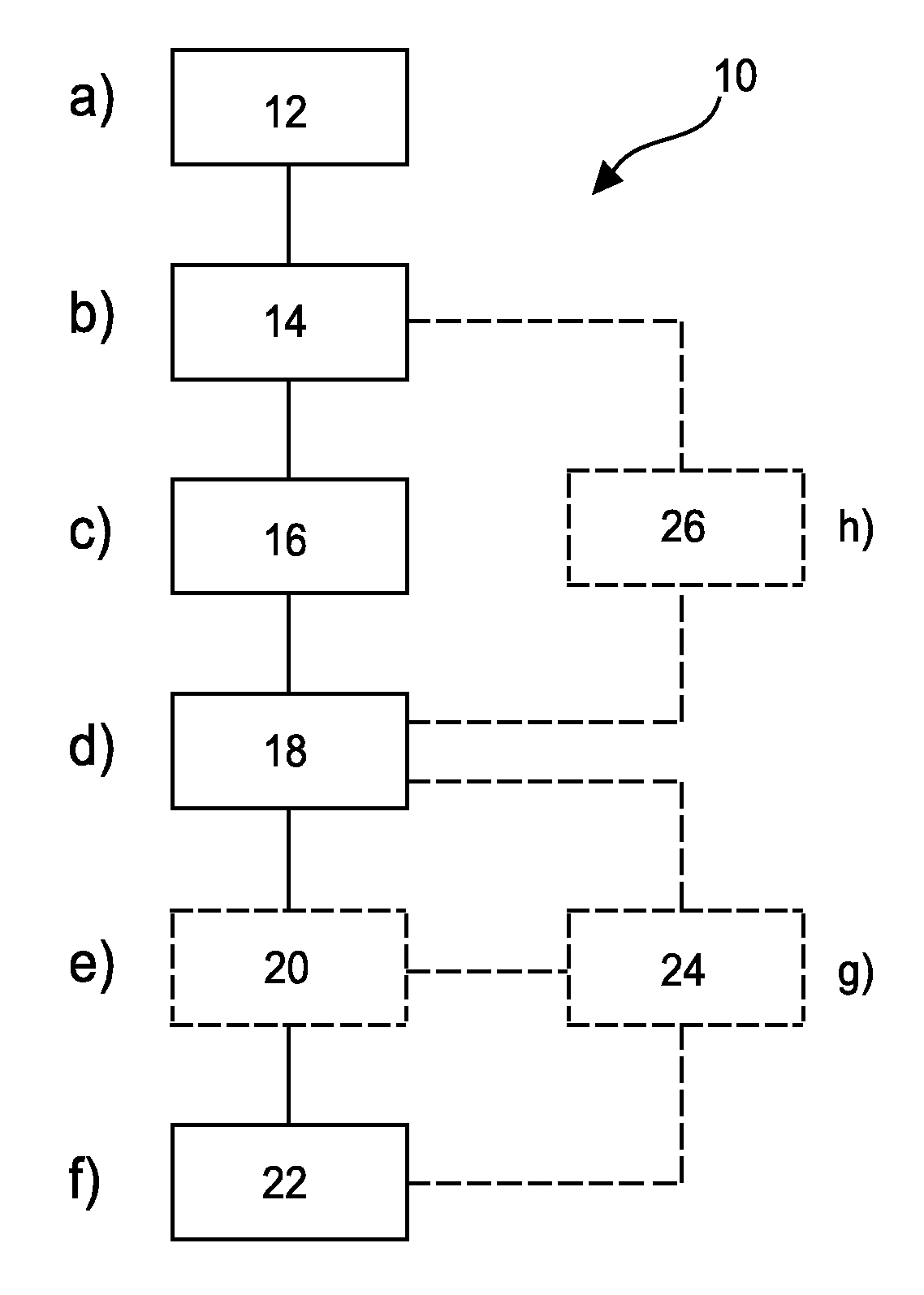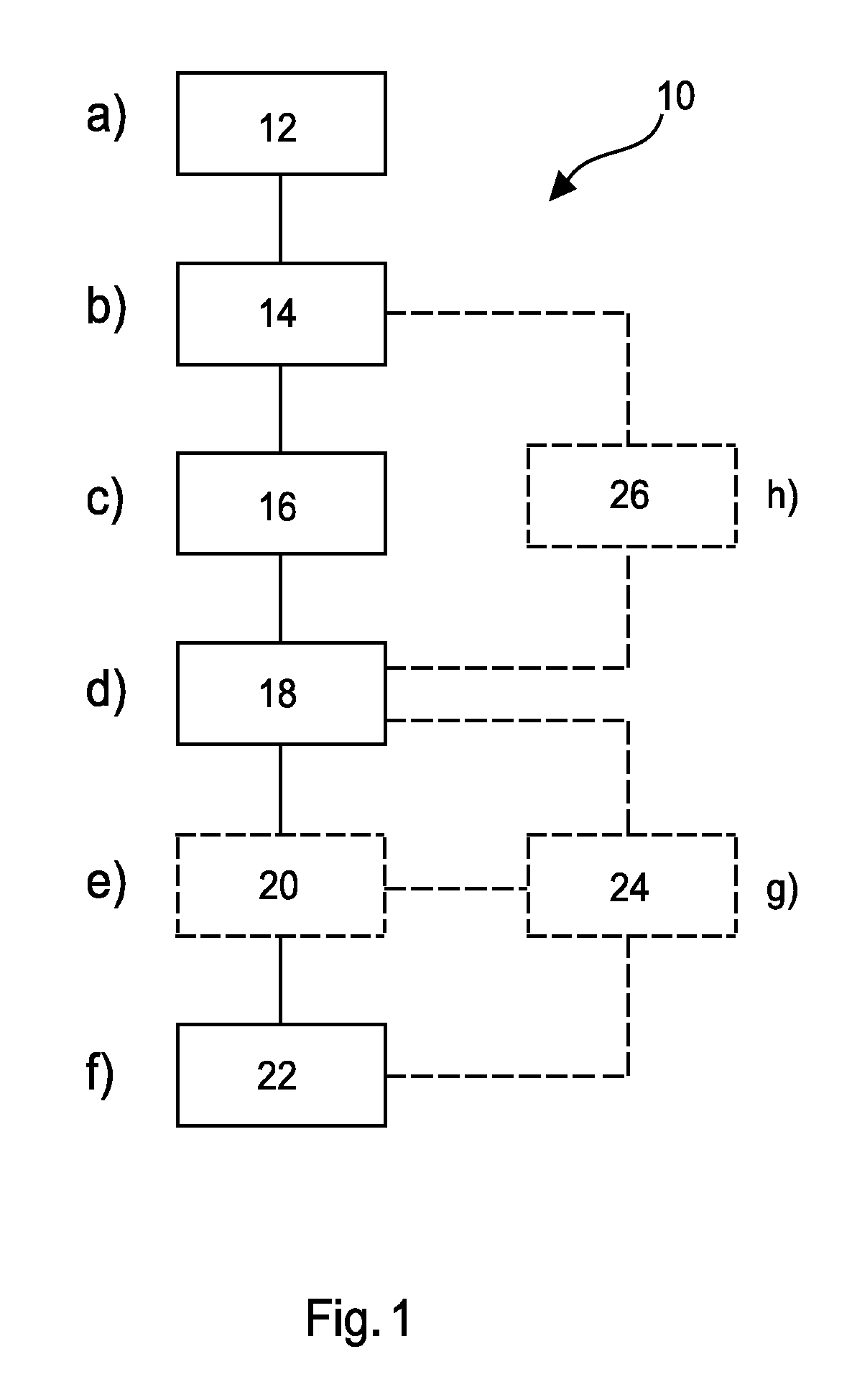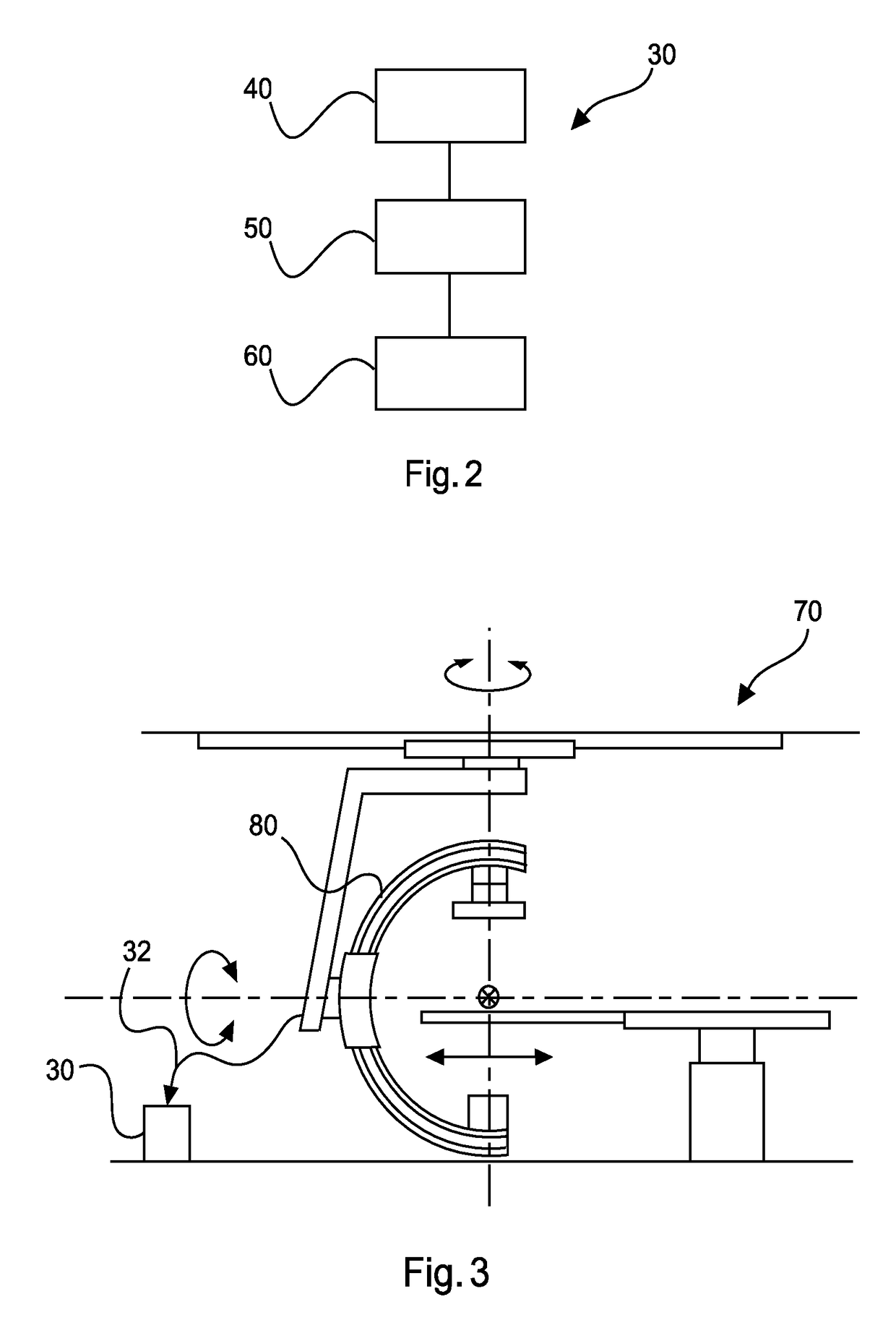Apparatus for displaying medical image data of a body part
a technology body parts, applied in the field of apparatus for displaying medical image data of body parts, can solve the problems of substantially larger reading time, similar problems, and difficulty in assessing the larger amount of data in a comparable time without missing, and achieve the effect of improving techniqu
- Summary
- Abstract
- Description
- Claims
- Application Information
AI Technical Summary
Benefits of technology
Problems solved by technology
Method used
Image
Examples
Embodiment Construction
[0052]FIG. 1 shows a method 10 for displaying medical image data of a body part in its basic steps. The method comprises the following:
[0053]In a providing step 12, also referred to as step a), medical data of a body part is provided.
[0054]In a first determining step 14, also referred to as step b), subsets of medical image data from the medical data are determined.
[0055]In a second determining step 16, also referred to as step c), a plurality of measures of information content for the subsets of medical image data is determined, wherein a measure of information content is associated with a subset of medical image data.
[0056]In a third determining step 18, also referred to as step d), a plurality of weighting factors for the subsets of medical image data is determined, wherein a weighting factor is associated with a subset of medical image data and the weighting factor is determined as a function of the measure of information content for that subset of medical image data.
[0057]In an...
PUM
 Login to View More
Login to View More Abstract
Description
Claims
Application Information
 Login to View More
Login to View More - R&D
- Intellectual Property
- Life Sciences
- Materials
- Tech Scout
- Unparalleled Data Quality
- Higher Quality Content
- 60% Fewer Hallucinations
Browse by: Latest US Patents, China's latest patents, Technical Efficacy Thesaurus, Application Domain, Technology Topic, Popular Technical Reports.
© 2025 PatSnap. All rights reserved.Legal|Privacy policy|Modern Slavery Act Transparency Statement|Sitemap|About US| Contact US: help@patsnap.com



